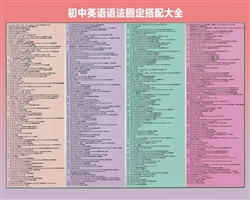Tang Dynasty
唐朝
Buddhism in Tang Dynasty
佛教
Buddhism had been introduced to China via the Silk Road during the Western Han Dynasty (206 BC—24 AD).
佛教在西汉时期(公元前206年——公元24年)经丝绸之路传入中国。
After five hundred years of peaks and troughs, it reached its height during the tang Dynasty.
经过500多年的跌宕起伏,它在唐朝达到了顶峰。
Chang'an, the capital became the main center of Buddhist learning in East Asia.
都城长安成为了僧人们在东亚学习的主要中心。
Monasteries and temples were built throughout the country in order to bring the teachings to the people.
修道院与寺庙在国家各处被建立来将教义传播给人民。
Some of the emperors adopted Buddhism as their religion.
一些帝王将佛教当做自己的宗教信仰。
Due to its dominance during the Tang Dynasty, the influence of Buddhism can be seen in a variety of aspects of social life.
由于其在唐朝时期的优势地位,在社会生活的各个方面我们都可以看到佛教的影响。
The expansion enjoyed by the faith resulted in an increase in temples and the numbers of monks.
信仰的传播导致了寺庙和僧侣数量的增加。
Shaolin Monastery, one of the most famous Buddhist temples in China, amassed wealth and influence during the Tang and became a place of pilgrimage for both monks and laymen alike.
中国最著名的佛教寺庙之一——少林寺,在唐朝积聚了财富和影响力并成为了僧人和俗人共同的朝圣之地。
In the capital, Chang'an (present day Xi'an), Daxingshan Temple, Straw Hut Temple, Xingjiao Si and Xiangji Temple still exist as witness to the glory of Buddhism during the Tang era.
在都城长安(今西安),大兴善寺、草堂寺、兴教寺和香积寺仍然见证着唐朝时期佛教的光辉兴盛。
The spread of Buddhism in China increased mutual understanding and links with other countries, promoting friendly relations and cultural exchanges.
佛在在中国的广为传播提升了与其他国家之间的互相理解与联系,加强了友好关系和文化交流。
Many monks traveled into India.
许多僧人旅行至印度。
The Big White Goose Pagoda and Small White Goose Pagoda serve as reminders of these famous pioneers, such as Monk Xuanzang (602—664), who was a prominent Buddhist traveler and translator and Monk Yijing.
大雁塔和小雁塔就是这些著名先驱者的印证,比如玄奘(602——664)——杰出的僧旅人和翻译家以及僧人奕经。
Xuanzang, concerned by the diversification of Buddhism at home, decided to go to India in order to study original texts and teachings.
玄奘意识到国内佛教的多样化之后,决定前往印度学习最原始的著作和教义。
He left Chang'an in 629 to make his pilgrimage.
他于629年离开长安开始他的朝圣。
After seventeen years of untold hardships and a journey of some 50 000 kilometers, Xuanzang returned to China bringing with him a large volume of Buddhist scriptures.
经过17年不为人知的艰辛与超过500000公里的行程,玄奘回到了中国,带回了大量的佛教经书。
He then spent twelve years at the Da Ci'en Temple translating the scriptures.
接着,他用12年时间在大慈恩寺翻译这些著作。
The famous novel A Journey to the West is based on his true story.
著名小说《西游记》就是根据他的真实故事写成的。
Another famous monk worthy of mention is Jianzhen (688—763).
另一个值得一提的僧人是鉴真(688——763)。
He was invited to preach in Japan and finally arrived there after five abortive attempts to undertake the journey there.
他受邀前往日本讲道,在经历了五次未完成的行程后最终到达目的地。
His statue is still enshrined in some Japanese temples to this day.
他的塑像在今日仍被供奉在日本的一些寺庙里。





 。
。